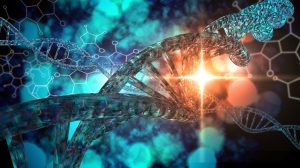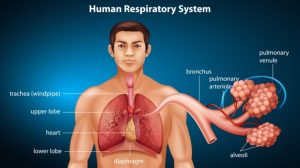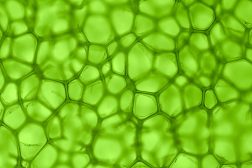Table of Contents
Definition
noun
plural: deoxyadenosine monophosphates
(biochemistry) A nucleotide composed of adenine, deoxyribose and a phosphate group, with a chemical formula: C10H14N5O6P
Details
Overview
A nucleotide is an organic compound made up of three subunits: a nucleobase, a five-carbon sugar, and a phosphate group. The sugar component may either be ribose or deoxyribose. The ribose is the sugar component of the nucleotides that make up RNA. The deoxyribose is the sugar component of DNA. Nucleotides are the monomeric units of nucleic acids. Each phosphate group connects the sugar rings of two adjacent nucleotide monomers. The phosphate groups and the sugar moieties form the backbone of a nucleic acid. The directionality of the chain runs from 5′-end to 3′-end. In DNA, the orientation of the two strands is in opposite directions. This is to allow complementary base pairing between nucleobase constituents. A nucleotide is, thus, a nucleoside with a phosphate group. Depending on the number of phosphate groups attached to the sugar moiety, it may be called nucleoside monophosphate (if with only one phosphate group), nucleoside diphosphate (with two phosphate groups), or nucleoside triphosphate (when with three phosphate groups). Depending on the pentose sugar component, a nucleoside may be a ribonucleoside or a deoxyribonucleoside. A ribonucleoside is a nucleoside with a ribose sugar component. (Depending on the nucleobase component, the ribonucleoside may be adenosine, guanosine, cytidine, uridine, or 5-methyluridine). A deoxyribonucleoside is a nucleoside with a deoxyribose sugar. Depending on the nucleobase component, a deoxyribonucleoside may be deoxyadenosine, deoxyguanosine, deoxycytidine, thymidine, or deoxyuridine. Also, depending on the nucleobase component, the nucleosides may be grouped into either the “double-ringed” purine or the “single-ringed” pyrimidine.
Deoxyadenosine monophosphate is a purine nucleotide composed of adenine, deoxyribose and a phosphate group, with a chemical formula: C10H14N5O6P
Characteristics
Deoxyadenosine monophosphate (dAMP) is a nucleoside phosphate in being comprised of a deoxyribonucleoside and one phosphate group. This means that it has a deoxyribose as its sugar constituent with one phosphate group attached. Its nucleoside contains a purine base, i.e. an adenine attached to the deoxyribose sugar. It has only one phosphate group attached to the nucleoside. Its conjugate acid form is deoxyadenylic acid whereas its conjugate base form is deoxyadenylate.
dAMP vs AMP
Adenosine monophosphate (AMP) is a nucleotide composed of adenine, ribose and a phosphate group. It has a chemical formula of C10H14N5O7P. It differs from dAMP in terms of the sugar component. dAMP, instead of having a hydroxyl group on the 2′ carbon of the sugar component as it is in AMP, has it reduced to a hydrogen atom (thus, deoxy- in its name). dAMP is one of the monomeric units that constitute DNA whereas AMP is one of the monomeric units that make up RNA.
Common biological reactions
Common biological reactions
dAMP is derived from an adenosine nucleotide, e.g. ATP, ADP, AMP. dAMP is formed by losing the extra phosphate groups, leaving just one, often via hydrolysis and then reducing the hydroxyl group of the ribose to hydrogen ion. AMP can come from dietary sources (e.g. liver and other RNA-rich food) or it can be synthesized, e.g. by combining two molecules of ADP during ATP synthesis by the action of the enzyme adenylate kinase: 2 ADP → ATP + AMP. By the de novo synthesis pathway, inosine monophosphate (IMP) from amino acids, phosphoribosylpyrophosphate (PRPP), and folate may be aminated to adenylate to eventually form AMP, which can then be reduced to dAMP. The conversion of AMP to dAMP is catalyzed by ribonucleotide reductase.
Biological functions
dAMP may serve as one of the monomer nucleotides in DNA when it is phosphorylated with two more phosphate groups, thus becoming dATP (deoxyadenosine triphosphate). In DNA, dATP complementary base pairs with (deoxy)thymidine triphosphate (dTTP).
Supplementary
Abbreviation(s)
- dAMP
- deoxy-AMP
IUPAC
Chemical formula
- C10H14N5O6P
Synonyms
Further reading
See also
- nucleotide
- DNA
- adenosine
- adenosine monophosphate (AMP)
- deoxyadenosine diphosphate
- deoxyadenosine triphosphate
© Biology Online. Content provided and moderated by Biology Online Editors







